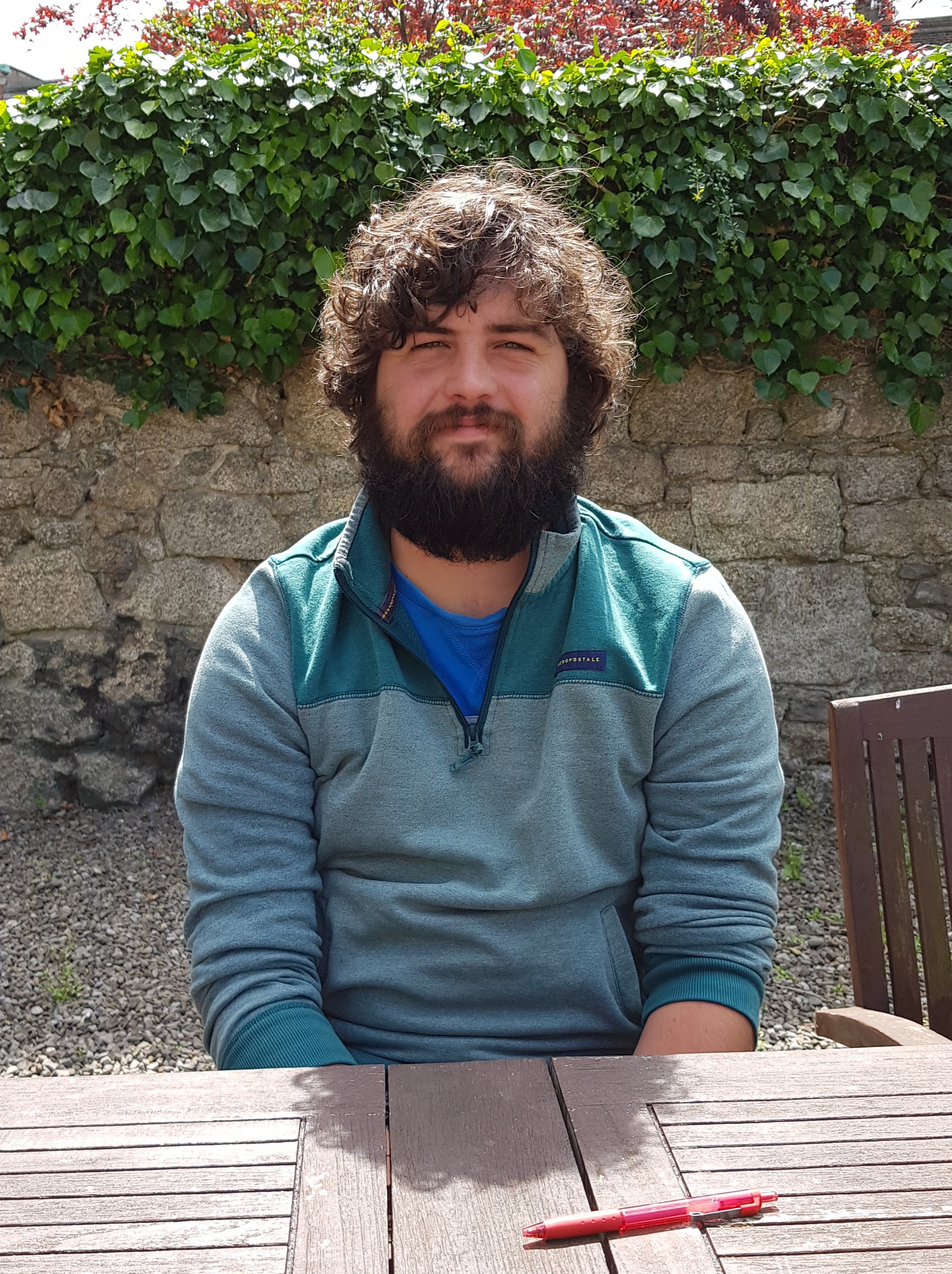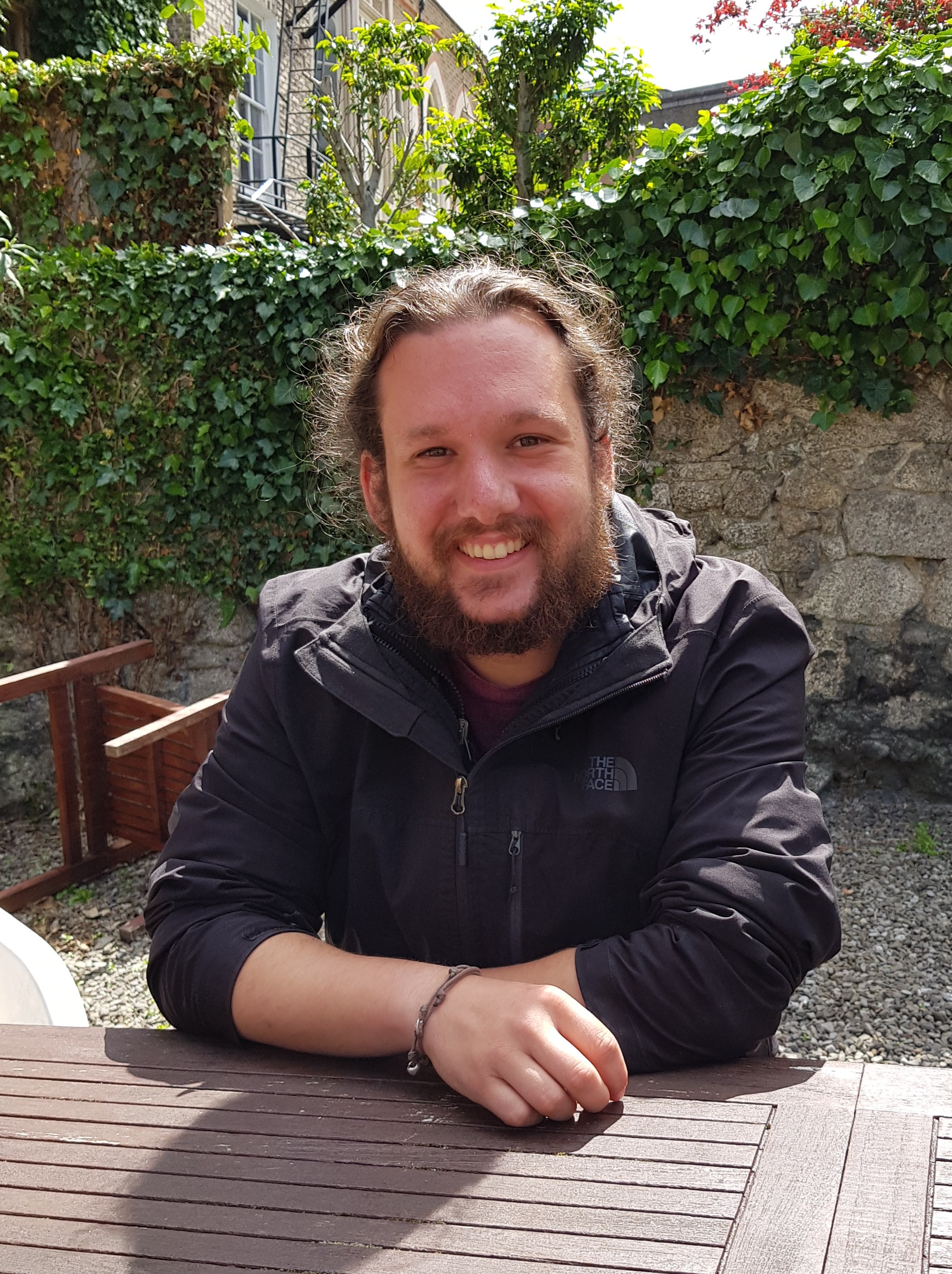June 11th 2019
Intro by Tess Tangney
To make the most out of our time here in DIAS we decided to see if we could annoy a few of the researchers and students around the building to find out what life after college is all about. This afternoon we sat down with Mario and Eoin to find out what the mysterious noise in the basement is. We had many guesses of our own, from squeaking mice to dying birds but not surprisingly we were very wrong.
The source of the noise turned out to be from a red cylinder in the corner. Tom Ray (head of the project) gave us a brief tour of the lab telling us that the cylinder was a microwave kinetic inductance detector (MKID) which they are currently developing. The detector needs to be kept at 0.1 Kelvin making this one if the coldest rooms in Ireland. One of the advantages of this type of detector over a standard CCD (a digital camera) is that is doesn’t need any filters, this reduces the amount of moving parts on the device which is always a benefit when working in space. It is also a small enough size that it would be reasonable to attach it to the end of a telescope.
I couldn’t help but ask how they manage to work everyday with the incessant pulsing squeak from the cooler. Mario and Eoin assured us that you get used to it and with the help of noise cancelling headphones it’s a good space to work in, even if they sometimes go home with the squeaking still ringing in their ears. After looking through the microscope at the one of the MKIDs, which are only about twice the size of a strand of hair, we moved outside (away from the noise) to ask a few questions of Mario and Eoin.
Interview
Names?
Mario Delucia and Eoin Baldwin, both PhD students going into third year 1st of September.
What are you researching?
Eion: The general thing is Microwave Kinetic Inductance Detectors (MKIDS). My part in particular is working on the electronic readout system for these detectors.
Mario: I’m more on the simulation and fabrication side so I’d be producing the wafers themselves.
What part do you find exciting and enjoyable about your research?
Eoin: Ona broader scope, I think the whole thing in general of making detectors for astronomy and that kind of stuff is quite cool and interesting. I don’t know space and the airy fairy kinda stuff like that, I did electronic engineering in college so I’ve always liked electronics and programming electronics, so my part of the project I quite like. From a day to day point of just, sitting down and writing code, I enjoy that kind of stuff.
 Mario: On my side it’s basically the same in the broad scale, I just did technology development, which I think is interesting, doing photo detectors for space application kinda makes me feel like I’m doing my part in the scientific community. I studied electronics and solid state physics so that’s basically exactly what I’m doing now.
Mario: On my side it’s basically the same in the broad scale, I just did technology development, which I think is interesting, doing photo detectors for space application kinda makes me feel like I’m doing my part in the scientific community. I studied electronics and solid state physics so that’s basically exactly what I’m doing now.
What do you actually do on a daily basis?
Eoin: Yeah so I brush my teeth (laughs)
Mario: Yeah that’s basically it I just try to do as little coding as possible (laughs) It’s either doing fabrication in the clean room or screwing down things in the lab here or on laptop doing CAD drawings or simulations.
Eoin: It’s something that could change loads like sometimes you could be you know writing code and then ten minutes later you’re cleaning boxes with whatever. So like last week with these boxes, with you know an SMA connector [coaxial cable]? (Knowing nods) So if you look at that there’s a little golden pin in the middle of it, so part of these boxes we had to thread these tiny little pins into a tiny little bit of insulator and then thread those into a tiny little hole in a box. So kinda weird hands on stuff like that (Mario: It’s very relaxing though) It’s nice if you’re doing something very mental to actually just be able to shut off and play with boxes and stuff. A balance between them all.
Mario: When you’re coding you might be very very focused and it’s extremely tiring but then you go down and just clean boxes (Eoin: Yeah and just shut off…)
What brought you to DIAS?
Mario: I was just looking for PhD somewhere because I didn’t have many chances down in Italy so just looking around and thinking well I’d like to be in an English speaking country because I didn’t speak any other languages. I wanted to do detectors and this just came up and was pretty interesting when I read about it and was lucky enough to get it.
Eoin: I’m kinda the same, so when I was in final year of college I decided I wanted to do a postgrad and had kinda looked at a few and applied for a couple and then when I was doing my final year project my supervisor mentioned this project in DIAS and he knew Tom and offered to put me in touch with him. Tom sent me on some info and I thought it sounded really interesting so I applied and here I am.
Leave a Comment
Last Updated: June 28, 2019 by Oscar O Hara
Interview #1: What’s that noise in the basement?
June 11th 2019
Intro by Tess Tangney
To make the most out of our time here in DIAS we decided to see if we could annoy a few of the researchers and students around the building to find out what life after college is all about. This afternoon we sat down with Mario and Eoin to find out what the mysterious noise in the basement is. We had many guesses of our own, from squeaking mice to dying birds but not surprisingly we were very wrong.
The source of the noise turned out to be from a red cylinder in the corner. Tom Ray (head of the project) gave us a brief tour of the lab telling us that the cylinder was a microwave kinetic inductance detector (MKID) which they are currently developing. The detector needs to be kept at 0.1 Kelvin making this one if the coldest rooms in Ireland. One of the advantages of this type of detector over a standard CCD (a digital camera) is that is doesn’t need any filters, this reduces the amount of moving parts on the device which is always a benefit when working in space. It is also a small enough size that it would be reasonable to attach it to the end of a telescope.
I couldn’t help but ask how they manage to work everyday with the incessant pulsing squeak from the cooler. Mario and Eoin assured us that you get used to it and with the help of noise cancelling headphones it’s a good space to work in, even if they sometimes go home with the squeaking still ringing in their ears. After looking through the microscope at the one of the MKIDs, which are only about twice the size of a strand of hair, we moved outside (away from the noise) to ask a few questions of Mario and Eoin.
Interview
Names?
Mario Delucia and Eoin Baldwin, both PhD students going into third year 1st of September.
What are you researching?
Eion: The general thing is Microwave Kinetic Inductance Detectors (MKIDS). My part in particular is working on the electronic readout system for these detectors.
Mario: I’m more on the simulation and fabrication side so I’d be producing the wafers themselves.
What part do you find exciting and enjoyable about your research?
Eoin: Ona broader scope, I think the whole thing in general of making detectors for astronomy and that kind of stuff is quite cool and interesting. I don’t know space and the airy fairy kinda stuff like that, I did electronic engineering in college so I’ve always liked electronics and programming electronics, so my part of the project I quite like. From a day to day point of just, sitting down and writing code, I enjoy that kind of stuff.
What do you actually do on a daily basis?
Eoin: Yeah so I brush my teeth (laughs)
Mario: Yeah that’s basically it I just try to do as little coding as possible (laughs) It’s either doing fabrication in the clean room or screwing down things in the lab here or on laptop doing CAD drawings or simulations.
Eoin: It’s something that could change loads like sometimes you could be you know writing code and then ten minutes later you’re cleaning boxes with whatever. So like last week with these boxes, with you know an SMA connector [coaxial cable]? (Knowing nods) So if you look at that there’s a little golden pin in the middle of it, so part of these boxes we had to thread these tiny little pins into a tiny little bit of insulator and then thread those into a tiny little hole in a box. So kinda weird hands on stuff like that (Mario: It’s very relaxing though) It’s nice if you’re doing something very mental to actually just be able to shut off and play with boxes and stuff. A balance between them all.
Mario: When you’re coding you might be very very focused and it’s extremely tiring but then you go down and just clean boxes (Eoin: Yeah and just shut off…)
What brought you to DIAS?
Mario: I was just looking for PhD somewhere because I didn’t have many chances down in Italy so just looking around and thinking well I’d like to be in an English speaking country because I didn’t speak any other languages. I wanted to do detectors and this just came up and was pretty interesting when I read about it and was lucky enough to get it.
Eoin: I’m kinda the same, so when I was in final year of college I decided I wanted to do a postgrad and had kinda looked at a few and applied for a couple and then when I was doing my final year project my supervisor mentioned this project in DIAS and he knew Tom and offered to put me in touch with him. Tom sent me on some info and I thought it sounded really interesting so I applied and here I am.
Category: Blog Posts, Events
Latest News
Read all about the new Astronomical Observatories of Ireland partnership here.
Latest Blog Post
Read about our new STEAM project Space Crafts here!
Events
Check out our upcoming events at dunsink.dias.ie/events.
Follow Us